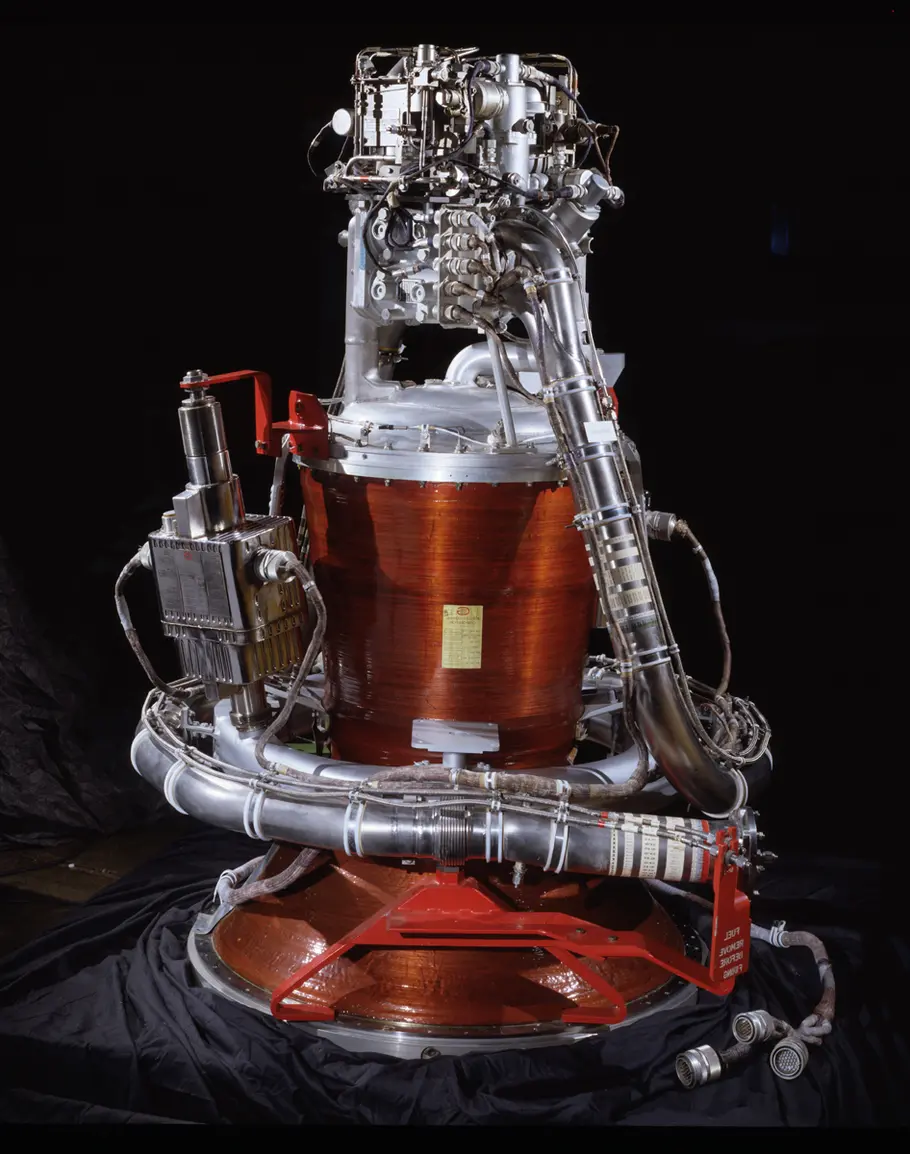Apollo Service Module Propulsion System
This is a cutaway of the combustion chamber of the Apollo Service Module Propulsion System (SPS), a liquid-fuel rocket engine used on Apollo spacecraft. It is not shown with its larger adjoining nozzle. Apollo astronauts used the SPS to steer the spacecraft toward the Moon, place it into lunar orbit, and propel it back toward Earth.
Using storable propellants, the SPS produced a thrust of 21,900 pounds for a minimum of 0.4 seconds or up to 12.5 minutes, as required. The SPS engine served successfully on all Apollo missions, including the Apollo-Soyuz Test Project in 1975. This object was donated to the Smithsonian in 1986 by the NASA Johnson Space Flight Center.
Display Status
This object is on display in Human Spaceflight at the Steven F. Udvar-Hazy Center in Chantilly, VA.

